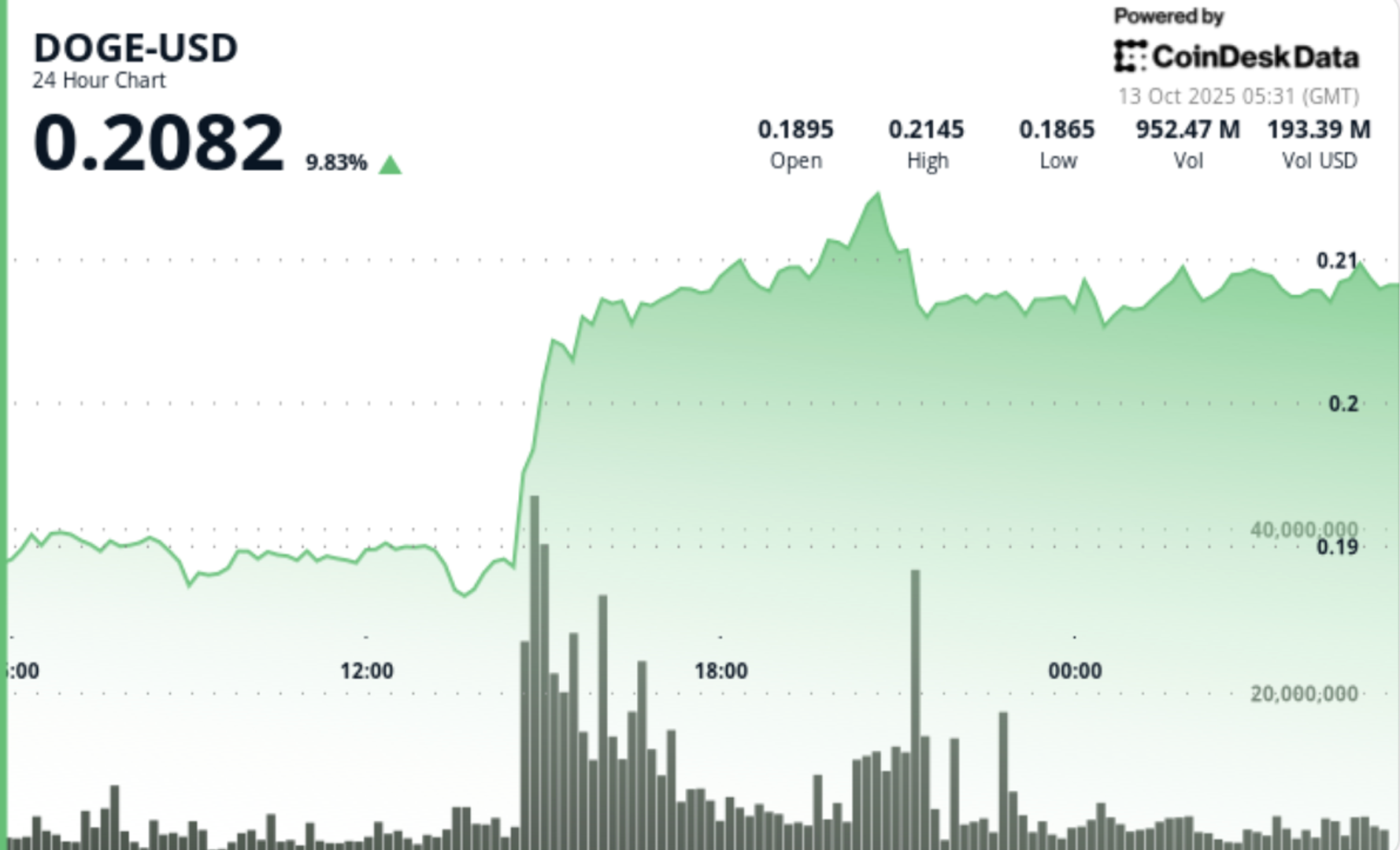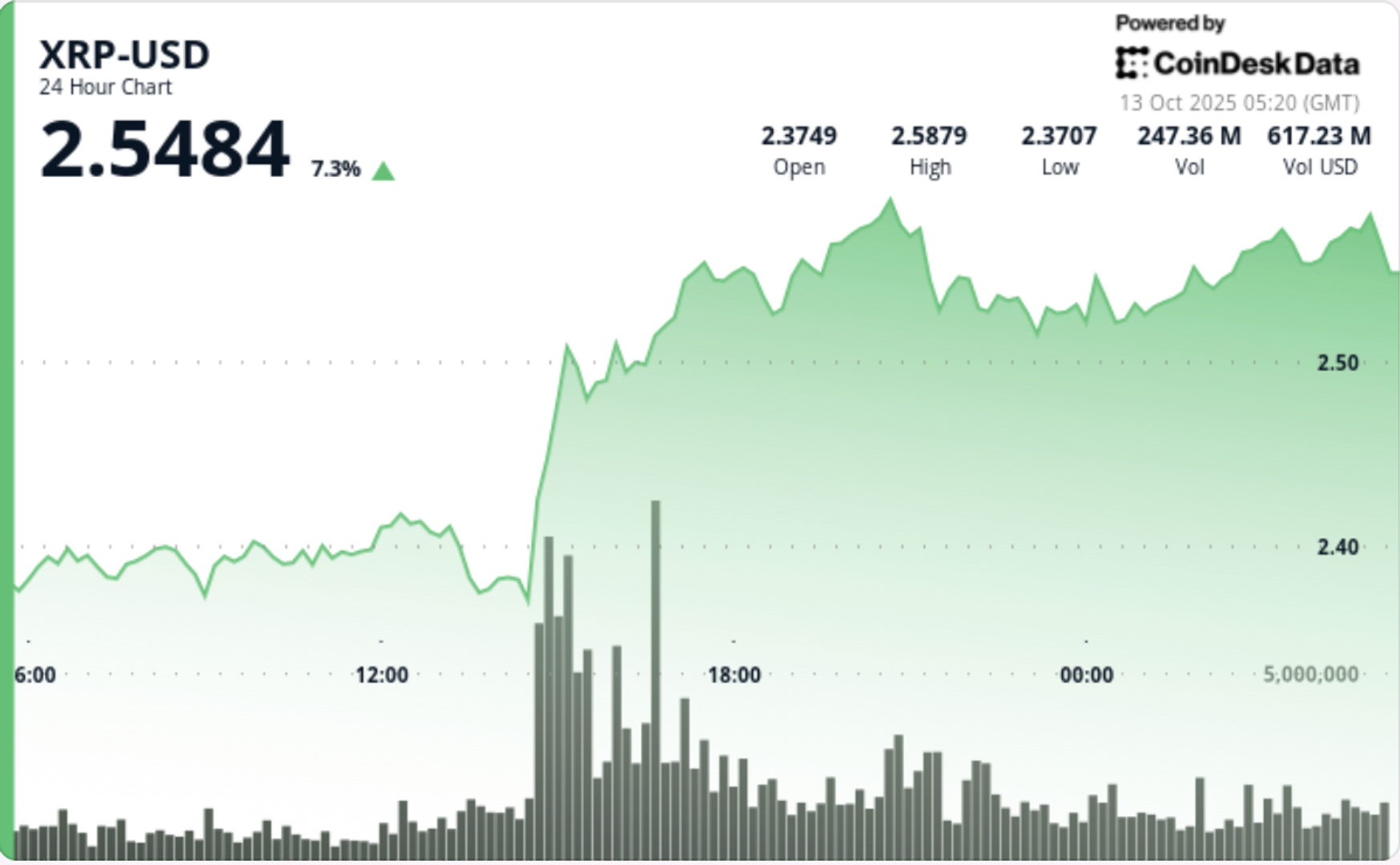Good Morning, Asia. Here's what's making news in the markets:
Welcome to Asia Morning Briefing, a daily summary of top stories during U.S. hours and an overview of market moves and analysis. For a detailed overview of U.S. markets, see CoinDesk's Crypto Daybook Americas.
Bitcoin is trading at $115,157, steady after a volatile weekend which began with the largest crypto liquidation event in history, while Ether rose to $4,146, extending its recovery from Friday’s lows near $3,700.
Elsewhere, Solana gained 11% to $196, Bittensor surged 28%, and Cronos jumped 11%, according to CoinDesk market data, as capital rotated back into high-beta assets following a $20 billion leverage flush. Both Washington and Beijing worked to cool down trade tensions over the weekend, helping the recovery.
Bitwise’s Jonathan Man points to positioning as the key factor: leverage was stretched across long-tail tokens, so when liquidity vanished, the wipeout was severe — but it cleared the decks for a faster reset.
Staking also played a secondary role in cushioning the decline. With nearly 30% of ETH supply locked in validators but only a quarter of that circulating as liquid staking derivatives, the network’s structure created friction that slowed panic selling. Even as derivatives unwound, validator capital stayed put, blunting what could have been a full liquidity spiral.
But as postmortems roll in, many fingers are pointing at Binance.
Dragonfly's Haseeb Qureshi questions if Ethena really depegged, arguing that instead $60–$90 million in USDe, along with wBETH and BNSOL, was dumped on Binance, exploiting a pricing flaw that valued collateral using Binance’s own order book instead of external oracles.
As Binance’s infrastructure buckled under heavy load, market makers were unable to hedge or rebalance positions, the thesis goes, causing wrapped assets to decouple from their underlying prices and deepening the selloff.
The localized collapse drove USDe to $0.65 on Binance only, while it held near $1 on Curve and Bybit. Because Binance’s unified margin system marked collateral to its internal prices, the drop instantly wiped out hundreds of millions in margin value, triggering forced liquidations across assets.
Ethena’s USDe protocol remained fully collateralized and redeemable throughout, suggesting the chaos was an exchange-side failure, not a stablecoin depeg.
Binance has since acknowledged “platform-related issues,” moved to oracle-based collateral pricing, and pledged compensation for affected traders.
In hindsight, Friday’s crash looks less like a stablecoin panic and more like a masterclass in exploiting an exchange's weakest structural link.
In a post on X, Yi He, Binance's co-founder and chief customer service officer admitted that the exchange had brief service delays and temporary depegs in some yield products but said these occurred after the broader market drop. Binance added that over $280 million in compensation has already been paid to affected users and reaffirmed that it will not cover ordinary market losses.
For now, crypto’s cleanout has given way to a measured rebound, one led by the assets that fell hardest and reset the deepest.
Market Movement
BTC: Bitcoin steadied around $115,000 after falling nearly 9% on Friday and recovering about 4% over the weekend as traders unwound shorts and broader risk sentiment began to stabilize.
ETH: Ether rebounded to about $4,150 after dropping nearly 17% on Friday, recovering faster than Bitcoin as leveraged positions cleared and DeFi activity picked back up.
Gold: Gold surged to a record $4,059.87 per ounce in early Asian trading on Monday as escalating U.S.–China trade tensions, renewed geopolitical risks, and expectations of Federal Reserve rate cuts fueled demand for safe-haven assets.

 4 hours ago
53
4 hours ago
53















 English (US)
English (US)